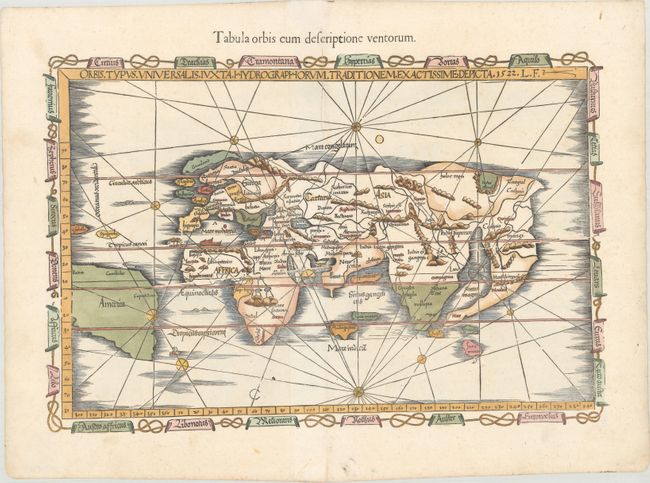Catalog Archive


Auction 160, Lot 9
One of the First Ptolemaic Maps to Name America
"Orbis Typus Universalis Iuxta Hydrographorum Traditionem Exactissime Depicta", Fries, Lorenz

Subject: World
Period: 1541 (published)
Publication: Claudii Ptolemaei Alexandrini Geographicae…
Color: Hand Color
Size:
18.9 x 12.6 inches
48 x 32 cm
Download High Resolution Image
(or just click on image to launch the Zoom viewer)
(or just click on image to launch the Zoom viewer)